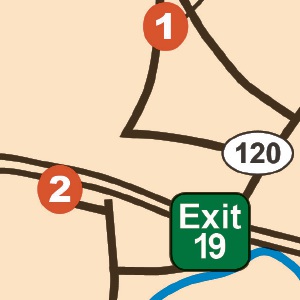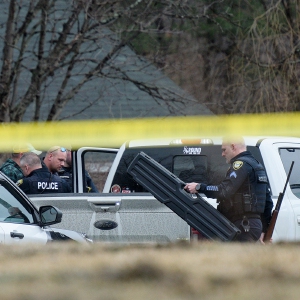High-speed internet headed to community hubs in Grafton County

Courtesy Grafton County Commissioners
| Published: 11-10-2023 3:36 AM |
An infusion of federal funding is poised to help bring fiber optic internet to two dozen Grafton County towns, including in the Upper Valley.
Nearly $12 million from the National Telecommunications and Information Administration will be combined with roughly $5 million the Grafton County Commissioners unanimously voted to spend in September to establish a “Middle Mile” fund that brings fiber optic cables to community hubs, such as town halls.
From town halls, municipal leaders will be responsible for finding funding — including applying for grants — to build out the network to the rest of the community.
“This is a project that would bring that high-speed fiber optic service into communities that don’t have it,” Grafton County Commissioner Wendy Piper, of Enfield, said in a phone interview. “That’s why we felt as commissioners that we could make this decision using taxpayer funding. That our whole county could grow and develop.”
Among the 24 towns that will benefit from the grant, four are in the Upper Valley: Grafton, Haverhill, Orange and Orford. Before starting construction, the county must complete an environmental assessment, which County Administrator Julie Libby estimated will take around six months. The majority of the fiber optic cables will be strung on existing telephone polls, with around 4% of the lines buried, Libby said.
The National Telecommunications and Information Administration “requires that all environmental standards are being complied with, and NTIA has to identify if a proposed project has any impact on the environment,” she added in an email explaining why an environmental assessment has to be done.
“I can imagine that in the spring we’ll be ready to start construction,” Libby said during a phone interview. “When it’s finished, it will allow internet service providers to work with communities (and) towns to build out the ‘Last Mile,’ which would be the connection that gets to the homes.”
The “Middle Mile” will be built by EX2 Technology Management of Omaha, Neb., which has also designed the project, she said. While Grafton County will initially own the fiber optic cables once the project is complete, officials are planning on putting out a request for proposals to internet providers to “find partners that we will work with in potentially taking ownership of the network at some point in the future,” Libby said.
Article continues after...
Yesterday's Most Read Articles
 At Dartmouth, hundreds protest ongoing war in Gaza and express support for academic freedom
At Dartmouth, hundreds protest ongoing war in Gaza and express support for academic freedom
 Herd departs Hartford’s last remaining dairy farm
Herd departs Hartford’s last remaining dairy farm
 Lebanon moves forward with plans for employee housing
Lebanon moves forward with plans for employee housing
 Colby-Sawyer president announces plan to depart
Colby-Sawyer president announces plan to depart
 Windsor man who failed to show up for trial arrested in Hartland
Windsor man who failed to show up for trial arrested in Hartland
The project has garnered quite a bit of support from Grafton County residents, particularly those in the Mascoma Valley, Piper said. High-speed internet could benefit Grafton County residents in a variety of ways, including online education, remote work and tele-health, she said.
She views broadening access to high-speed internet as part of the county administration’s goal to “help our aging population stay home and not be institutionalized.”
Among the letters of support the county delegation reviewed before approving the funding was one from Russell Poitras, who serves on the Grafton Selectboard.
“I would like everyone to know that I speak for all my constituents when I say any help from the board to get high speed into this rural area is greatly appreciated,” he wrote in a September email to Libby.
Even towns such as Canaan and Enfield, which are not covered by the grant because they’ve previously gotten funding from other high-speed internet grants, stand to benefit.
“The link coming from Orange goes right up to the edge of the town and is less than a mile away from the Canaan Town Hall,” Libby wrote in an email. “It would be easy for an interested Internet Service Provider (ISP) to serve the town from there, and it should be easy to get the town hall connected, just not directly with the grant funds.”
One of the biggest advocates for the funding has been New Hampshire state Rep. Corinne Morse, D-Canaan.
Without the grant, Morse said, it could have taken as long as a decade for fiber optic internet to come to Canaan. Now, that estimate is 12 to 36 months.
“It just makes it a more viable opportunity for the providers as well,” Morse said in a phone interview. “It makes more sense for them to spend the money to tie into all of these towns, to do all the upgrades, rather than spend the money for not a lot of returns which was the case previously.”
However, not all municipal officials are impressed with the funding. John Adams, chairman of the Orford Selectboard, described it as too little, too late and also expressed concerns about the expense towns must incur to connect individual homes.
“There’s a huge amount of hidden expenses coming to the towns,” Adams said in a phone interview, adding that a mile of fiber optic cable can cost tens of thousands of dollars. “This is not a gift coming to the towns.”
Adams said that the companies N.H. Broadband and LymeFiber are currently working on providing services to Orford residents. He added that if state and federal officials were really committed to bringing high-speed internet to rural communities, they would provide more money to make it happen.
“The federal government and then the state government has to truly support implementation, like they did with rural electrification,” Adams said. “If they believe that this is necessary for towns to do just like they said with electricity, help them do it.”
Liz Sauchelli can be reached at esauchelli@vnews.com or 603-727-3221.

 Dartmouth graduate student-workers go on strike
Dartmouth graduate student-workers go on strike Man tied to Lebanon school lockdowns pleads not guilty to charges
Man tied to Lebanon school lockdowns pleads not guilty to charges 
